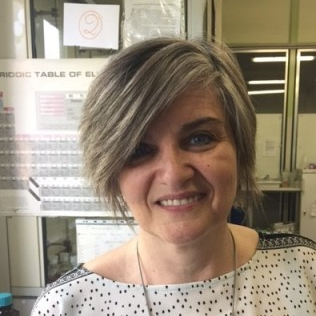Recent Advances in Anticancer Drugs
A special issue of Molecules (ISSN 1420-3049). This special issue belongs to the section "Medicinal Chemistry".
Deadline for manuscript submissions: closed (31 October 2019) | Viewed by 132623
Special Issue Editors
Interests: rational drug design, synthesis and structure–activity relationships of biologically active compounds (small molecules and peptides); preparation and characterization of chiral compounds; discovery of new modulators of sigma receptors as well as of small molecules able to affect the protein kinase C (PKC)/ELAV proteins/mRNA system
Special Issues, Collections and Topics in MDPI journals
Interests: evaluation of antitumorigenic effects of natural and synthetic compounds; characterization of biological properties of mesenchymal stem cells from different sources
Special Issues, Collections and Topics in MDPI journals
Special Issue Information
Dear Colleagues,
Cancer is the second leading cause of death, being responsible for almost one in six deaths globally. The World Health Organization (WHO) highlights that cancer no longer needs to be a death sentence, as the capacity exists to reduce its burden and improve the survival and quality of life of people living with the disease. Technological and scientific advances facilitate the study of tumour biology and the identification of novel therapeutic targets, allowing the transition from cytotoxic chemotherapy to targeted cancer therapies. Compounds targeting specific cellular processes have been designed and biomarkers useful for the early diagnosis and for the transition of new molecules from the preclinical to the clinical stage identified. Nevertheless, oncology drug discovery and development remain a challenge for all the scientists working in this field.
This Special Issue of Molecules will cover the major advancements and challenges of cancer drug discovery. It will report on the identification and evaluation of novel anticancer agents, biological targets and therapeutic approaches, original researches and review articles on exploring antitumor drugs.
We cordially invite researchers working in this field to contribute original research articles, short communications, and critical review articles. Short papers on one compound will be also welcome.
Prof. Dr. Simona Collina
Prof. Dr. Mariarosaria Miloso
Guest Editors
Manuscript Submission Information
Manuscripts should be submitted online at www.mdpi.com by registering and logging in to this website. Once you are registered, click here to go to the submission form. Manuscripts can be submitted until the deadline. All submissions that pass pre-check are peer-reviewed. Accepted papers will be published continuously in the journal (as soon as accepted) and will be listed together on the special issue website. Research articles, review articles as well as short communications are invited. For planned papers, a title and short abstract (about 100 words) can be sent to the Editorial Office for announcement on this website.
Submitted manuscripts should not have been published previously, nor be under consideration for publication elsewhere (except conference proceedings papers). All manuscripts are thoroughly refereed through a single-blind peer-review process. A guide for authors and other relevant information for submission of manuscripts is available on the Instructions for Authors page. Molecules is an international peer-reviewed open access semimonthly journal published by MDPI.
Please visit the Instructions for Authors page before submitting a manuscript. The Article Processing Charge (APC) for publication in this open access journal is 2700 CHF (Swiss Francs). Submitted papers should be well formatted and use good English. Authors may use MDPI's English editing service prior to publication or during author revisions.
Keywords
- Anticancer drugs
- Drug discovery
- Biological targets
- Therapeutic approaches
- Biomarkers
Benefits of Publishing in a Special Issue
- Ease of navigation: Grouping papers by topic helps scholars navigate broad scope journals more efficiently.
- Greater discoverability: Special Issues support the reach and impact of scientific research. Articles in Special Issues are more discoverable and cited more frequently.
- Expansion of research network: Special Issues facilitate connections among authors, fostering scientific collaborations.
- External promotion: Articles in Special Issues are often promoted through the journal's social media, increasing their visibility.
- e-Book format: Special Issues with more than 10 articles can be published as dedicated e-books, ensuring wide and rapid dissemination.
Further information on MDPI's Special Issue polices can be found here.







